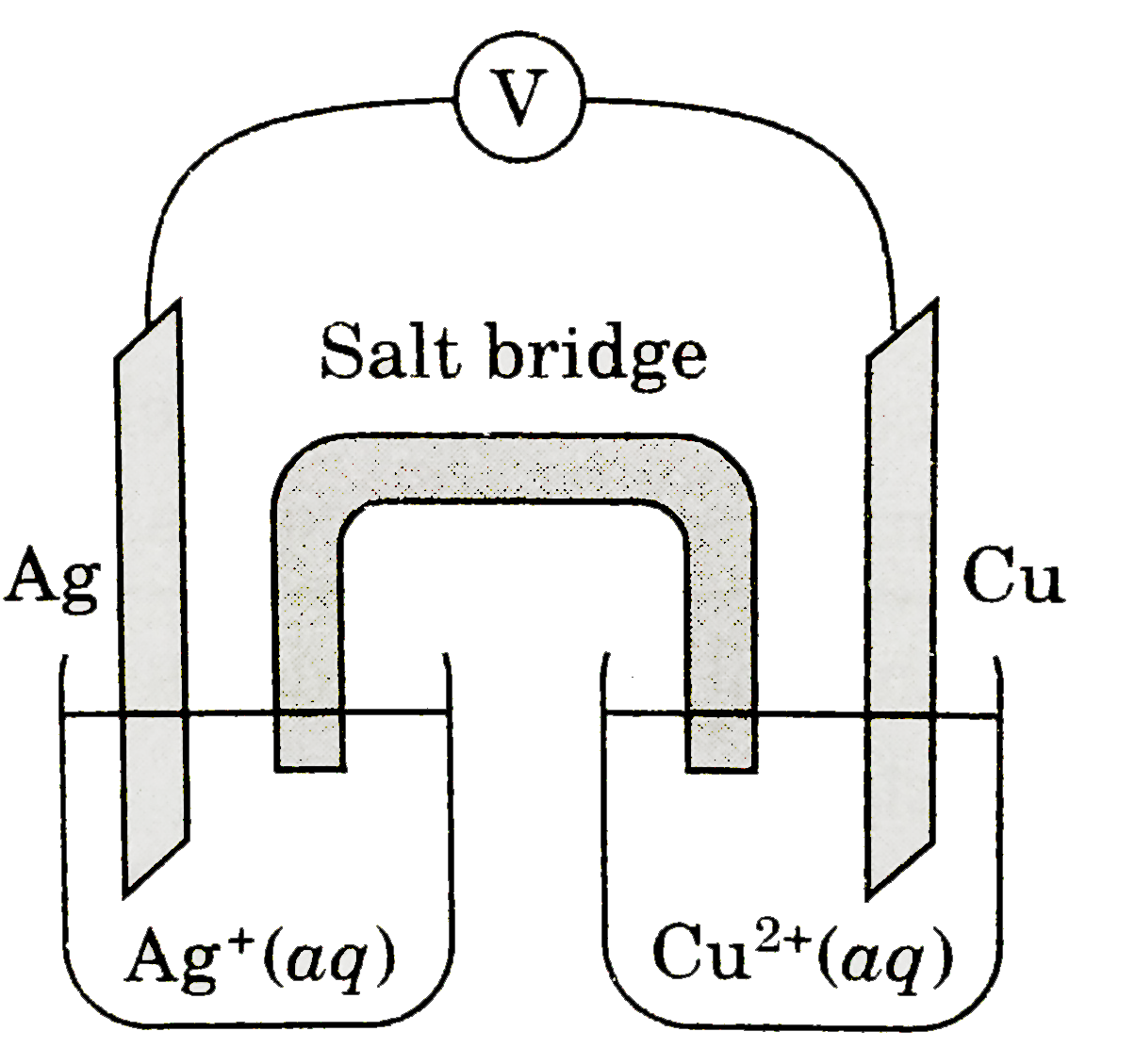Al3+(aq)+3e−→Al(s) E∘=−1.66V
Cu2+(aq)+2e−→Cu(s) E∘=+0.34V
What voltage is produced under standard conditions by combining the half-reactions witih these standard Electrode Potential?
1.32 V
2.00 V
2.30 V
4.34 V
The correct Answer is:B
The cell will be
Al(s)∣∣Al3+(aq.)∣∣∣∣Cu2+(aq.)∣∣Cu(s)
E∘Cell=E∘Cathode−E∘Anode
=E∘Cu2+/Cu−E∘Al3+/Al
=+0.34−(−1.66)=+2.00V
Topper's Solved these Questions
- BOOK - OP TANDONCHAPTER - ELECTROCHEMISTRYEXERCISE - One or more than correct answer19videos
ELECTROCHEMISTRY
- BOOK - OP TANDONCHAPTER - ELECTROCHEMISTRYEXERCISE - Assertion- Reason27videos
ELECTROCHEMISTRY
- BOOK - OP TANDONCHAPTER - ELECTROCHEMISTRYEXERCISE - OBJECTIVE TYPE QUESTION (LEVEL -A)194videos
ELECTROCHEMISTRY
- BOOK - OP TANDONCHAPTER - COORDINATION COMPOUNDSEXERCISE - SBJECTIVE TYPE96videos
COORDINATION COMPOUNDS
- BOOK - OP TANDONCHAPTER - HALOALKANES AND HALOARENES EXERCISE - Single Interger answer type questions14videos
HALOALKANES AND HALOARENES
Similar Questions
A13++3e−→Al(s), E∘=−1.66V
Cu2++2e−→CU(s), E∘=+0.34V
What voltage is produced under standard conditions by combining the half reactions with these standard electrode potentials?View SolutionFollowing reactions occur at cathode during the electrolysis of aqueous copper (II) chloride solution:
CU2+(aq)+2e−→Cus, E∘=+0.34V
H+(aq)+e−→12H2(s), E∘=0.00V
On the basis of their standard reduction electrode potential (E∘) values, which reaction is feasible at the cathode and why?View Solution
Knowledge Check
- Question 1 - Select One
Au3++3−→Au(s) E∘=1.50V
Cu2++2e−→Cu(s) E∘=0.34V
According to the standard reduction potentials above, a substance that can oxidize only one of these metals must have an E∘ value:Aless than 0.34VBbetween 0.34 and 0.80 VCbetween 0.80 and 1.50VDgreater than 1.50V - Question 2 - Select One
Al3+(aq)+3e−→Al(s)E∘=−1.66V
Mn2+(aq)+2e−→Mn(s)E∘=−1.18V
What is the standard potential of a volaic cell produced by using these two half-reactions?A0.04VB0.48VC2.84VD6.68V - Question 3 - Select One
Ag+(aq)+e−→Ag(s) E∘=0.80V
Co2+(aq)+2e(−)→Co(s) E∘=−0.28V
Use the standard reduction potentials to determine the standard potential for the reaction:
Co(s)+2Ag+(aq□)→Co2+(aq)+2Ag(s)A0.52VB0.66VC1.08VD1.88V
Al3+(aq)+3e−→Al(s)E∘=−1.66V
Mn2+(aq)+2e−→Mn(s)E∘=−1.18V
What process occurs at the anode of a volatic cell utilizing these two half-reactions?View SolutionSn4+(aq)+2e−→Sn2+(aq) E∘=0.15V
Cr3+(aq)+e−→Cr2+(aq) E∘=0.41V
According to the standard reduction potentials above, what is the value of E∘ for the reaction below?
2Cr3+(aq)+Sn2+(aq)→2Cr2+(aq)+Sn4+(aq)View SolutionAg+(aq)+e−→Ag(s)E∘=0.80V
Cu2+(aq)+2e−→Cu(s)E∘=0.34V

Which increases immediately if the surface area of the silver electrode is increased?View SolutionAg+(aq)+e−→Ag(s)E∘=0.80V
Cu2+(aq)+2e−→Cu(s)E∘=0.34V

Which expression gives the voltage for this cell if [Cu2+]=1.00M and [Ag+]=0.010M?View SolutionCu++e−→Cu, E∘=x1vo<,
Cu2++2e−→Cu, E∘=x2 volt, then for
Cu2++e−→Cu+,E∘ (volt) will be :View Solution

